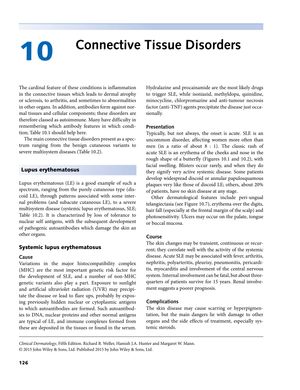Connective Tissue Disorders
November 2014
lupus erythematosus systemic lupus erythematosus dermatomyositis systemic sclerosis morphoea eosinophilic fasciitis lichen sclerosus mixed connective tissue disease rheumatoid arthritis reactive arthritis relapsing polychondritis panniculitis systemic steroids immunosuppressive agents phototherapy SLE steroids immunosuppressants

TLDR Different connective tissue disorders have unique symptoms and treatments, with varying outcomes and often require ongoing care from a specialist.
The document from 2014 provides an overview of various connective tissue disorders, including lupus erythematosus (LE), dermatomyositis, systemic sclerosis, morphoea, eosinophilic fasciitis, lichen sclerosus, mixed connective tissue disease (MCTD), rheumatoid arthritis, reactive arthritis, relapsing polychondritis, and panniculitis. It details their symptoms, risk factors, treatments, and prognoses. LE, particularly systemic lupus erythematosus (SLE), is noted for its severe multisystem impact, predominantly affecting women, with a 75% survival rate at 15 years. Dermatomyositis is associated with muscle weakness and skin changes, and up to 25% of adults over 40 may have an underlying malignancy. Systemic sclerosis has limited treatment options, with two subtypes affecting the skin and other organs. Morphoea is linked to Lyme borreliosis in Europe and has a generally good prognosis. MCTD can evolve into SLE or systemic sclerosis, while rheumatoid arthritis and reactive arthritis have skin and joint manifestations. Treatments for these disorders vary from systemic steroids to immunosuppressive agents and phototherapy, but clinical trial data for many treatments are lacking, necessitating management based on symptoms and affected organs. Regular follow-up with a rheumatologist is recommended for these conditions.



